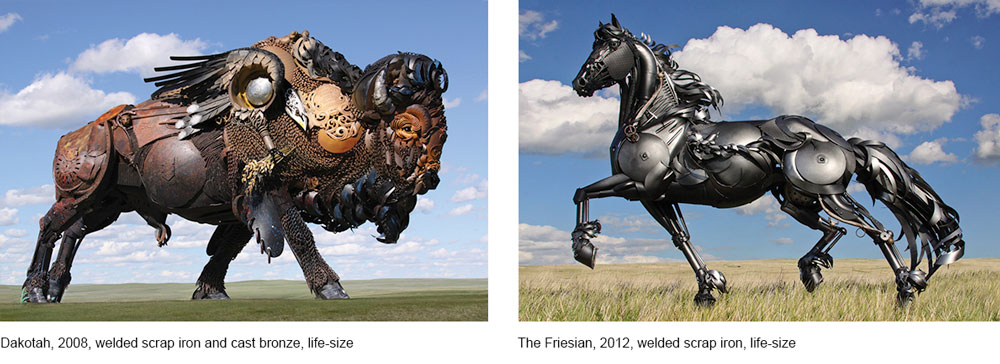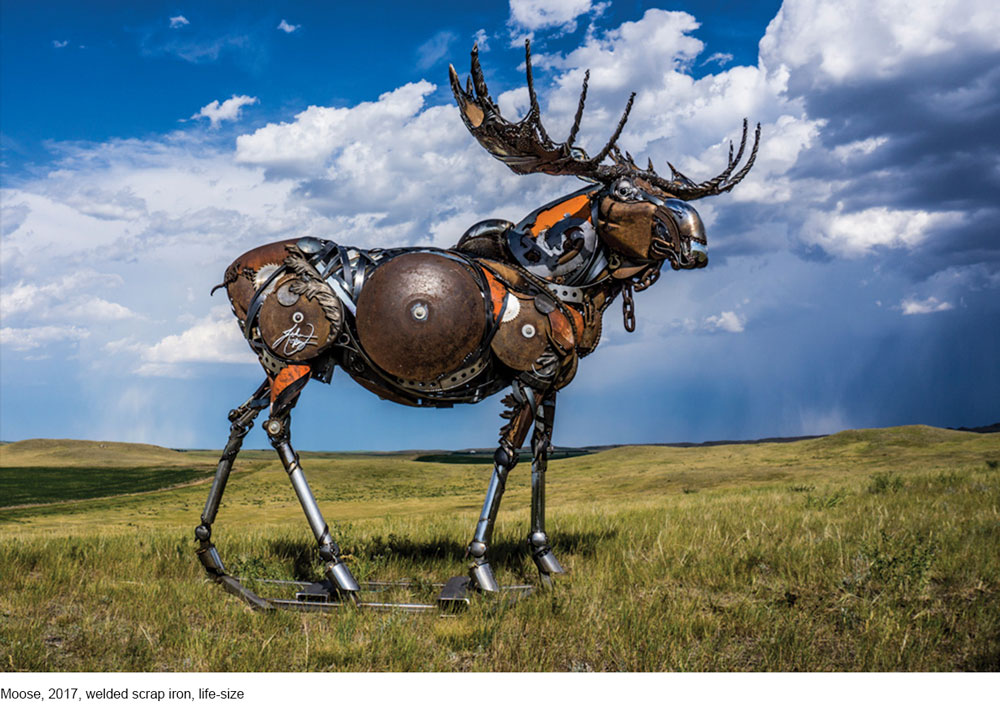
John Lopez’s sculpture is like a prodigy of “mechanical biology,” where animal robotization meets Darwinian evolution. His works of art carry illusionism which involves and bewilders the viewer during the decoding process. Through the use of little tricks, the artist provides tiny clues, such as shapes, colours or textures; in fact, he does not even depict them realistically, many are incredibly abstract. These successive sets of symbology create an illusion that only makes sense in the viewer’s mind. It is precisely here that magic exerts its greatest power; incorporates the different stimuli as integral parts of the whole.

Consequently, the materials that are totally unconnected with the function which they were designed for, here they appear to be integrated and reborn. Besides being a structural part of the work, they are also used more superficially — from an aesthetic-ornamental standpoint. They become, in short, the DNA that gives life to these pieces of Art. Two fascinating things coincide: the first is to understand how colours and textures are recreated and the forms are conceived; the second is to discover the origin or source of the amalgam of pieces that make up the sculpture. Lopez’s sculpture is an expressionist representation which materializes new meanings in his models. The constant recycling creates surrealistic similarities, with glimpses of absurdist humour.
It is interesting to notice the relationship between the silhouette and the volume of the different masses that constitute the body’s muscular areas. There is a self-interconnectedness that results in a genetic pulsar, a natural reincarnation in a syntactic body that works like a machine. Rusty and useless parts of any unused mechanism now appear rejuvenated in another body and serving a different purpose. They bear the traces of their past life and convey a very strong dynamic energy. This mechanical anatomy depicts the animal with such originality and similitude that it looks capable of attaining the perfect locomotion. This resurrection not only mimics the physical characteristics but also it is temperament and soul.

Pedro Boaventura
Leave a comment